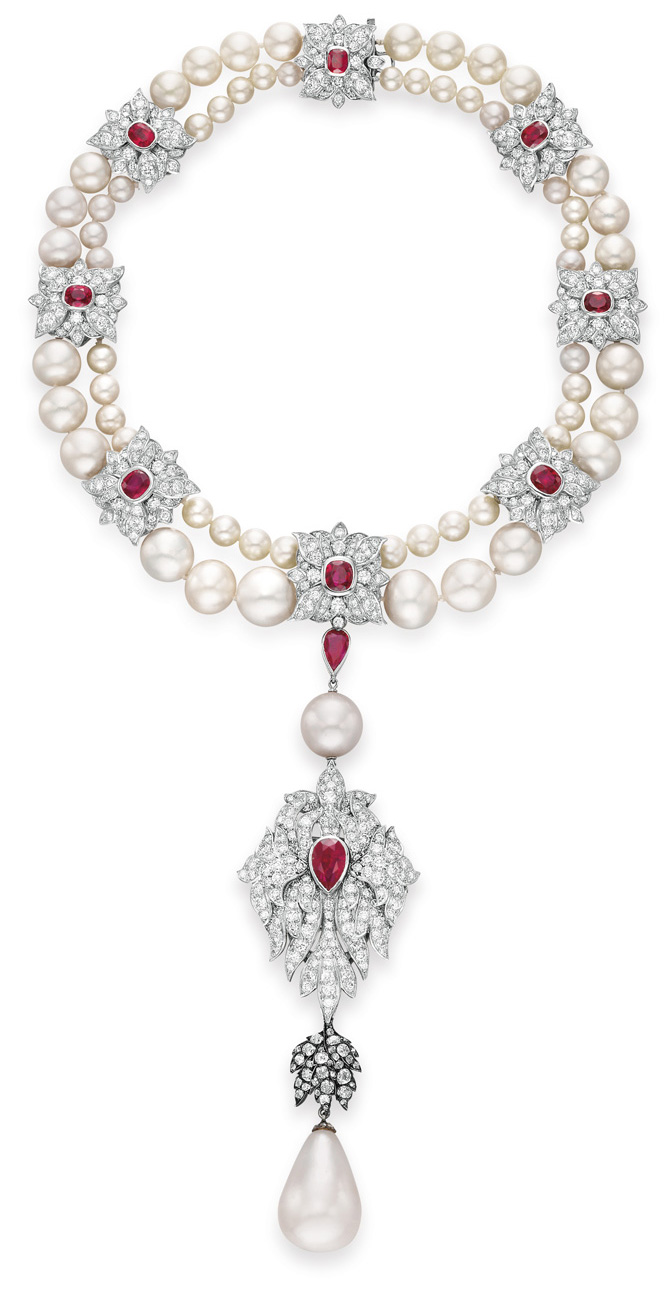
Pearls have been around for a very long time. The first written mention of pearls was in 2206 B.C. by a Chinese historian. The ancient Romans treasured these gems and Julius Caesar passed a law that restricted their use to the ruling class. Legend has it that to show her wealth Cleopatra crushed a natural pearl into a glass of wine and drank it during a dinner with Marc Antony.
In 1917, Maisie Plant, wife of the uber-wealthy railroad tycoon Morton F. Plant, was thoroughly enchanted by a double strand of natural pearls by Cartier valued at $1 million. Lucky for her, Pierre Cartier was hunting for a retail location in New York City. The Fifth Avenue and 52nd Street address of the Plant mansion was just what the jeweler had in mind. He proposed a trade — the pearls plus $100 in exchange for the mansion.

Cartier’s connection to amazing natural pearls didn’t stop there. In 1969, the 16th-century natural pearl La Peregrina was purchased at auction for $37,000 by Richard Burton, who gifted it to Elizabeth Taylor. Before belonging to Hollywood royalty, it had belonged to European royalty including being among the Spanish Crown Jewels and owned by England’s Queen Mary I. When purchased at auction, La Peregrina came on a platinum and seed pearl chain. In 1972, Taylor and Cartier designer Al Durante collaborated on a necklace design around the pearl, which sold at Christie’s in 2011 for $11,842,500.
In India, pearls were very desired and the Maharaja of Baroda Khande Rao Gawkwar, who ruled from 1856 to 1870, acquired a seven-strand necklace of natural pearls. The Maharaja was a noted jewelry collector of that time and the pearls were one of the most expensive jewels in the Royal Treasury. In April 2007, a two-strand necklace made up of 68 of the largest pearls from the original seven strands found its way to auction at Christie’s in New York City. It sold for $7,096,000.

The natural pearl is one of the most valued of all gems. At one time, it was the most valuable of gems. Found in the oceans of the Persian Gulf, off the coast of Ceylon, in rivers and lakes in China and in rivers in Europe, pearls were difficult to recover. Divers had to go underwater to a depth of up to 100 feet to find the mollusks that may or may not have contained a pearl. It was dangerous work, but a pearl find was a treasure found. This was a major reason that pearls were so valuable and coveted by royalty.
Pearls are formed when a small object gets stuck inside of a certain type of mollusk and irritates it. To ease the irritation the mollusk coats the object with nacre. As the mollusk pours more layers of nacre on the irritant, a pearl is gradually formed. Natural pearls occur randomly in nature without human assistance and are extremely rare.
Cultured pearls are created when a bead or other irritant is implanted inside a mollusk. These mollusks live in farms where the water is controlled for purity and temperature. The same nacre-building process occurs as with a natural pearl. Today, thanks to the culturing process developed in Japan by Kokichi Mikimoto in 1893, there is a steady supply of cultured pearls. By contrast, natural pearls are practically obsolete due to climate change and water pollution. So, if one is lucky enough to find a natural pearl, it is sure to be an important addition to any jewelry collection.

